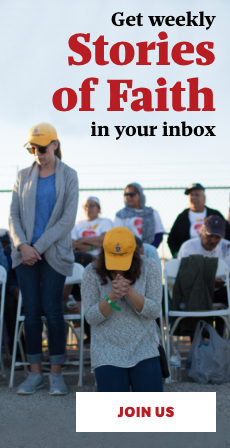According to Aleteia, the 16 popes elected since 1800 have averaged 14 years on the job. That means that the length of Pope Francis’ pontificate was slightly below average at 12 years, one month, and 8 days.
But there is no doubt that Pope Francis’ comparatively brief pontificate had an enormous effect on the Church, especially in the U.S. through his appointments of bishops. This impact will last, no matter the priorities or focus of his successor.
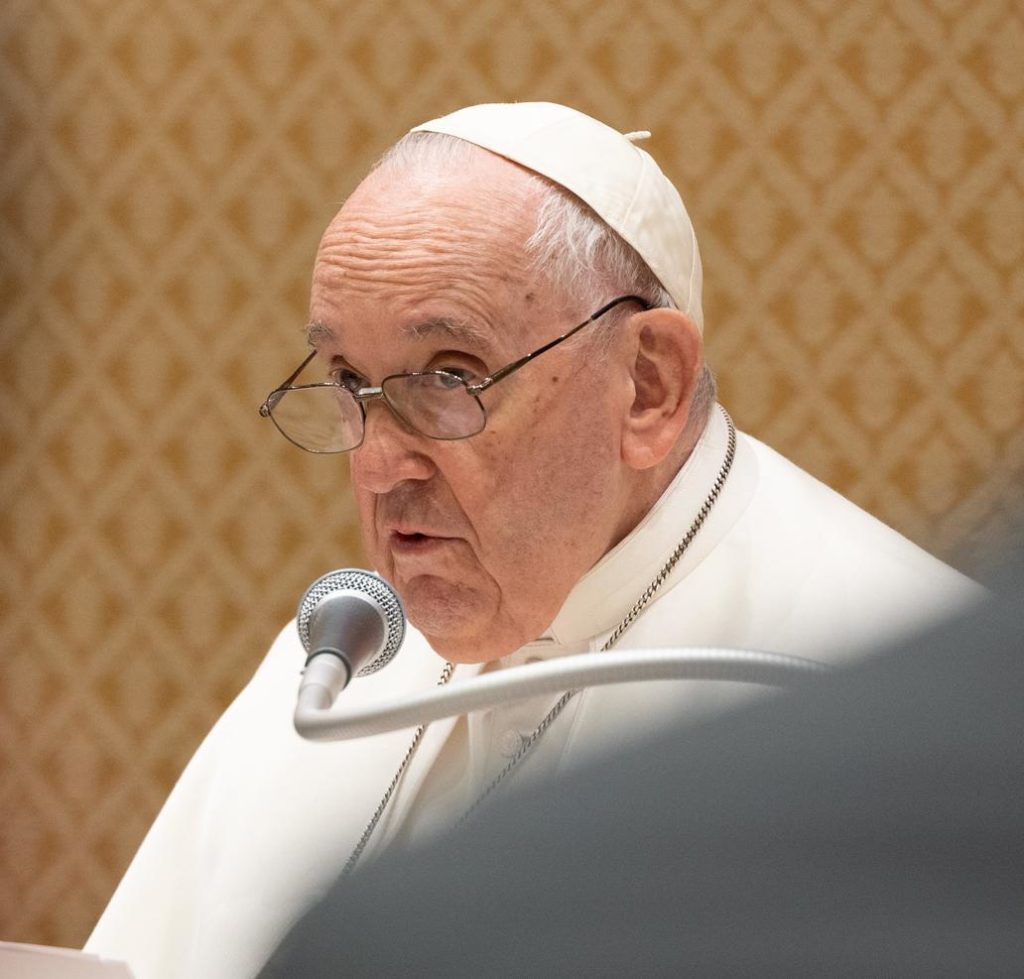
Analysis of data available on gcatholic.org, reveals that Pope Francis achieved the following:
- Named 7 U.S.-born or U.S.-based cardinals during his tenure (including our current papal nuncio).
- Appointed 23 current Archbishops of the 29 Archdioceses in the U.S., and
- Made more than 160 other U.S. bishops, at least 158 of which are still in active ministry.
When taken together, this means that two-thirds of the U.S. Church’s 273 active bishops and archbishops were appointed or ordained during Pope Francis’ pontificate.
His vision is undoubtedly reflected in the shepherds he chose for our country, namely through his emphasis on joy, reaching those on the peripheries, and the importance of pastors “smelling like the sheep.”
Francis shepherds
As Francis said in the inaugural year of his pontificate to the Congregation of Bishops—the body charged with helping him select new bishops—he wanted “pastor bishops” not “princes.”
He said,
May they be gentle, patient and merciful; may they love poverty, interior poverty, as freedom for the Lord, and exterior poverty, as well as simplicity.”
So, it is no surprise that this new generation of U.S. bishops appointed by the late Holy Father includes shepherds who put great a great emphasis on compassion, simplicity, and caring for the needs of the poor and vulnerable.
One such appointment is Bishop Bill Wack of the Diocese of Pensacola-Tallahassee, Florida. The most significant part of the South Bend, Indiana, native’s résumé prior to becoming bishop was his work with the homeless.
Since the Holy Cross priest was named a bishop in 2017 (much to his shock), he never lost his contagious sense of humor, his love for people and his deep desire to share the joy of the Gospel with all.
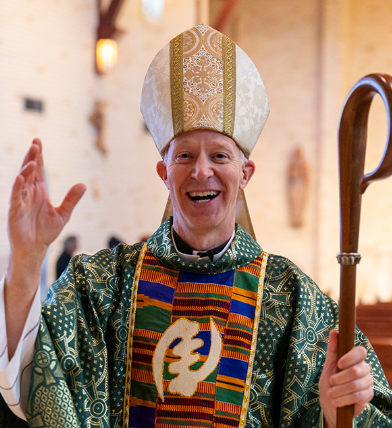
Bishop Jeffrey Fleming of the Diocese of Great Falls-Billings, Montana, is a native son of Montana who served 20 years as a priest in Big Sky country. In 2022, he was appointed bishop of Great Falls-Billings, a diocese that is roughly the same geographic size as New Zealand.
Like all bishops, he went to Rome in his inaugural year for the proverbial “baby bishops” crash course. In his case, it was his first-ever trip to Rome! The down-to-earth bishop who was new to the frescoed halls of Rome was nonetheless the quintessential “Francis pick.”
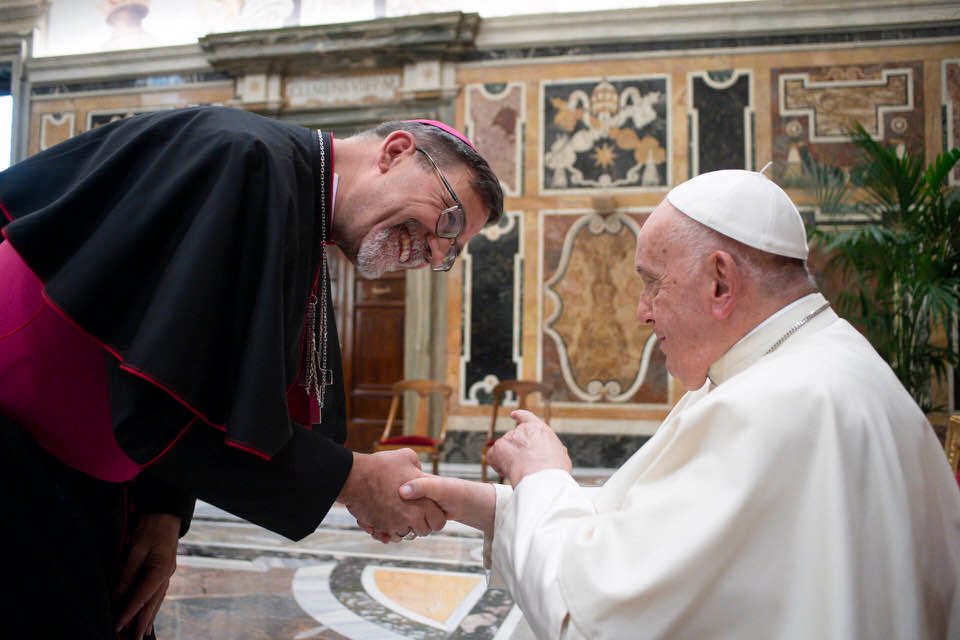
There is Bishop Ronald Hicks of the Diocese of Joliet, a Chicago-born priest whose vocation was solidified during his post-college years as he worked in an orphanage in Central Mexico. Later, as a priest, he worked for five years leading a home in El Salvador for impoverished and neglected children.
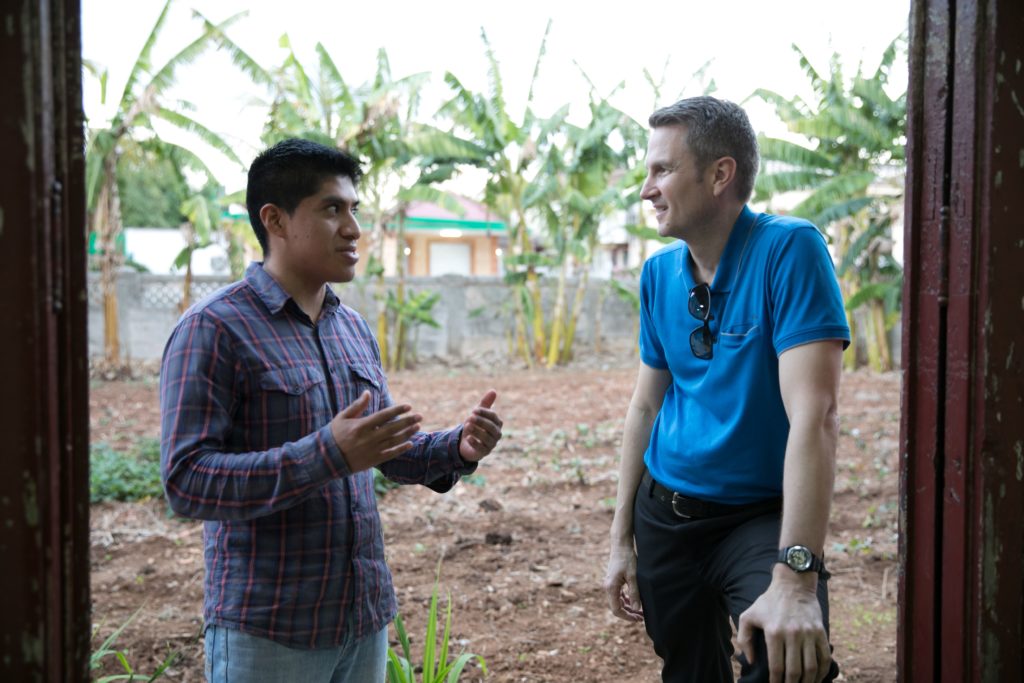
Below, Bishop Hicks is seen greeting children at a Mass he celebrated for persons with special needs in the Diocese of Joliet.
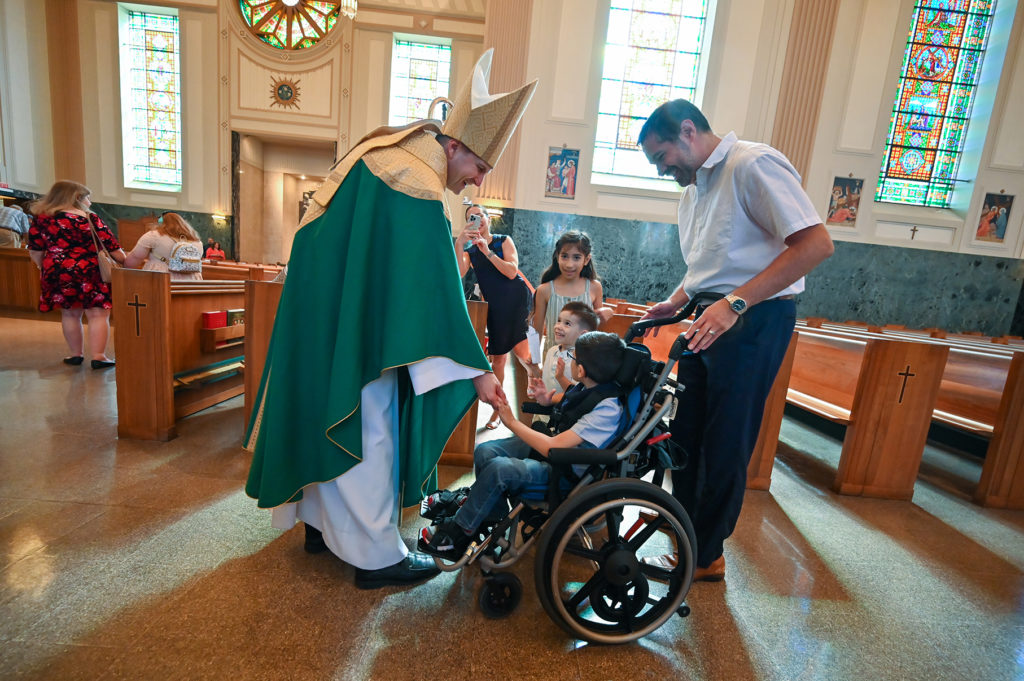
Bishop Chad Zielinski is a former U.S. Air Force chaplain and two-time war veteran, and was first appointed bishop of Fairbanks, Alaska, in 2014. There, he regularly traveled to the Native Alaskan missions in the backcountry only accessible by plane.
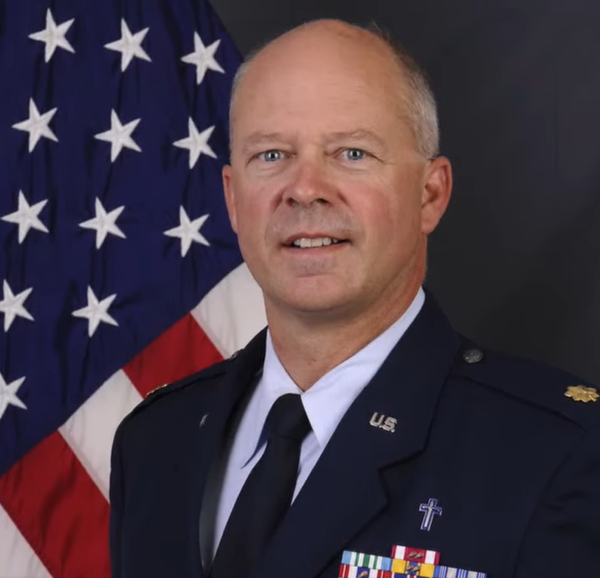
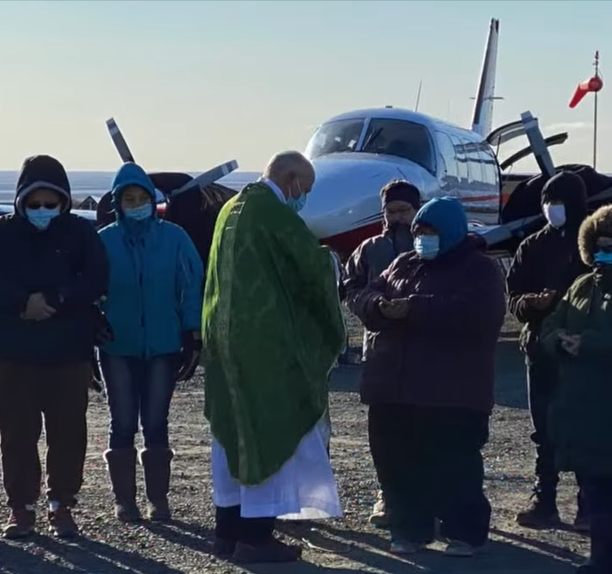
In these communities the priests (and the visiting bishop) live a subsistence lifestyle in incredibly austere living conditions usually in rickety rectories that are their sole protection against the occasional negative 30-degree winter nights. He kept this up for eight years before being reassigned to another Extension-supported diocese – New Ulm, Minnesota.
A style to continue
We must not discount some of the Pope Benedict XVI appointed bishops who were Francis-like shepherds before there was a “Francis.” These bishops absolutely leaned into the vision that Pope Francis brought to the Church. Catholic Extension Society has been equally proud to support their ministries.
This includes Bishop Joe Tyson in the Diocese of Yakima, who every summer works in the fields picking fruit alongside his seminarians and the tens of thousands of seasonal workers who come to central Washington each year. Below, he talks with faithful after celebrating an outdoor Mass at the workers’ campsite.
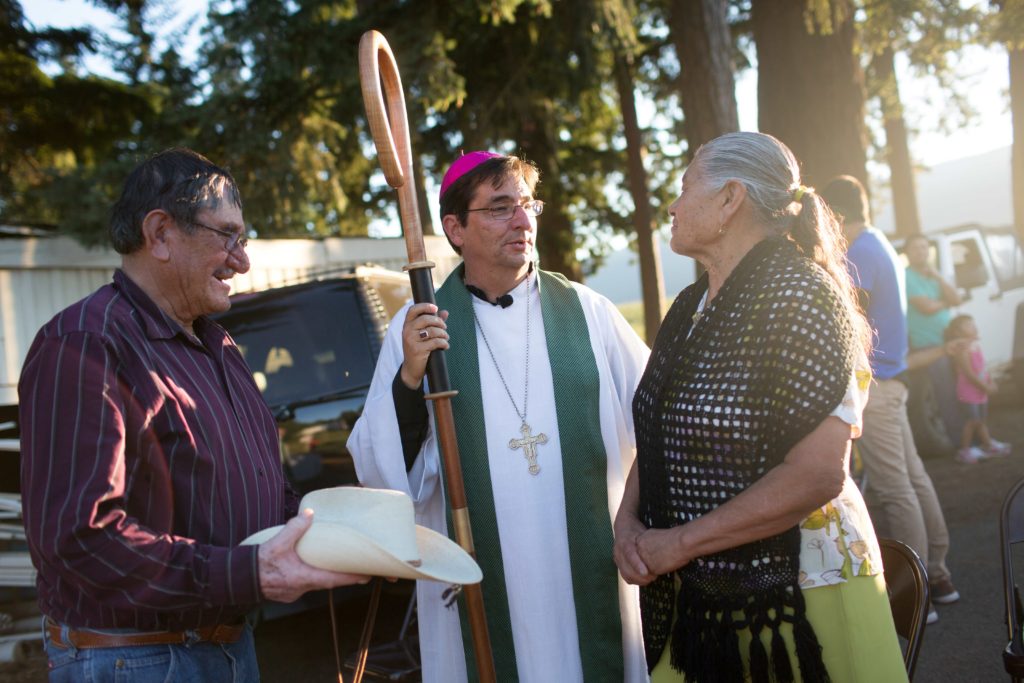
The goal is to not only “smell like the sheep” in Francis’ parlance, but to understand the labor, realities and hardships whom these young seminarians will one day serve as priests. “Calluses before chalices,” he says.
There is also Bishop Anthony Taylor of Little Rock, Arkansas, who drives his 2003 Honda Civic with 600,000 miles on it across his state-wide diocese! His travels take him to missions scattered at every corner of the state, such as Blessed Stanley Rother Church in Decatur – located in northwest Arkansas just 10 miles from Oklahoma and 225 miles from Little Rock.
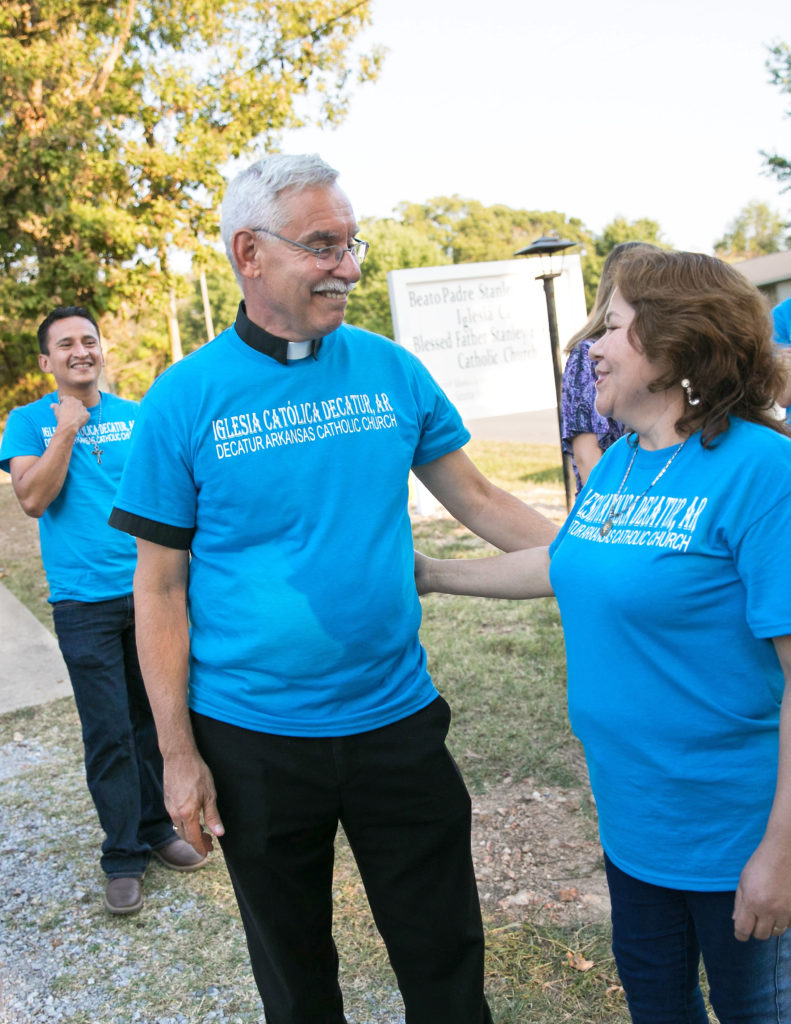
Besides seeing no purpose in trading in a car which has been a loyal companion on his episcopal journey, he thinks it’s good to be a model of humility and simplicity to young priests. His leadership and this example of simplicity has inspired many across Arkansas. Furthermore, he has ordained more than 50 priests in Little Rock during his tenure, which is more than many large archdioceses.
And let’s not forget Archbishop Gustavo García -Siller, appointed archbishop of San Antonio by Pope Benedict XVI. Following Texas’ deadliest school shooting in Uvalde, Texas, in 2022 that left 21 people dead, the archbishop personally walked with the children and their families as they sought healing.
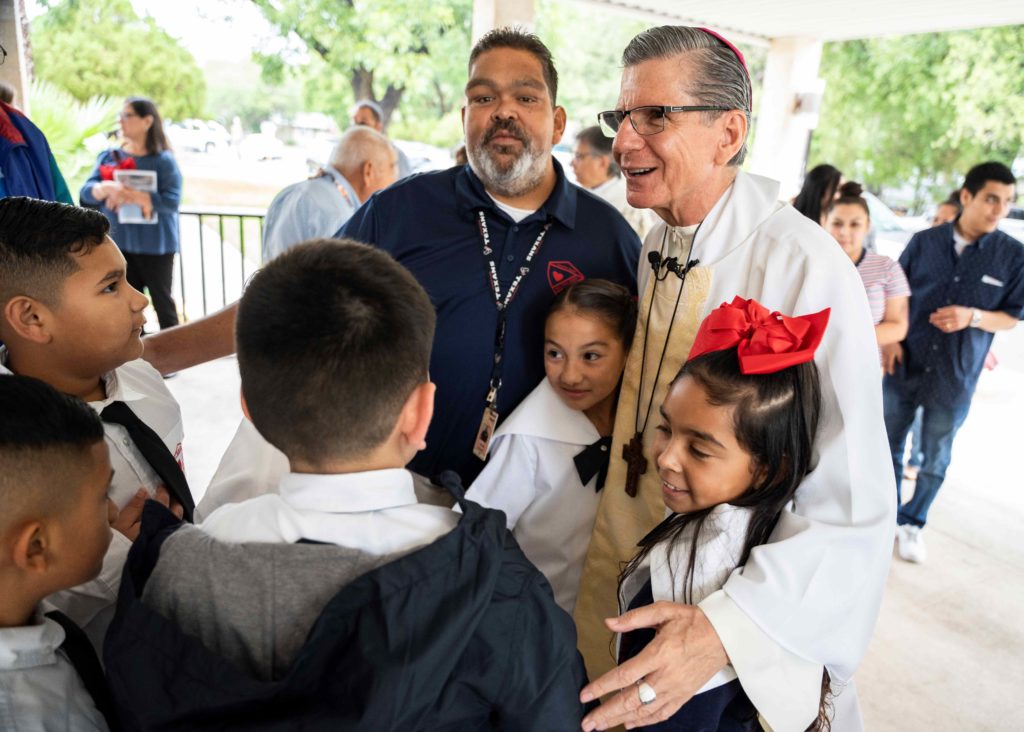
He had the same pastoral presence only one month later, when the largest case of smuggling deaths in the history of the country occurred in his city. Fifty-one migrants were found dead in the back of a locked trailer truck in 100-plus- degree temperatures. Again, Archbishop Garcia-Siller was there comforting the families and visiting the traumatized survivors in the hospital.
In Catholic Extension Society’s last in-person meeting with Pope Francis in Rome in April 2023, he spoke to our delegation about “God’s Style.” God’s “style,” he said, was never “distant, detached or indifferent. Instead, it is one of closeness, compassion and tender love.” This is a style worth continuing no matter who the next pope is.
As our chancellor and a Francis-appointee, Cardinal Blase Cupich, said at a memorial Mass on April 23, “Now that Francis is no longer with us, he would want us to take up this same mission with a palpable sense that Jesus continues to abide with us and invites us to make Him present in the world, by being in touch with the realities of peoples’ lives.”
